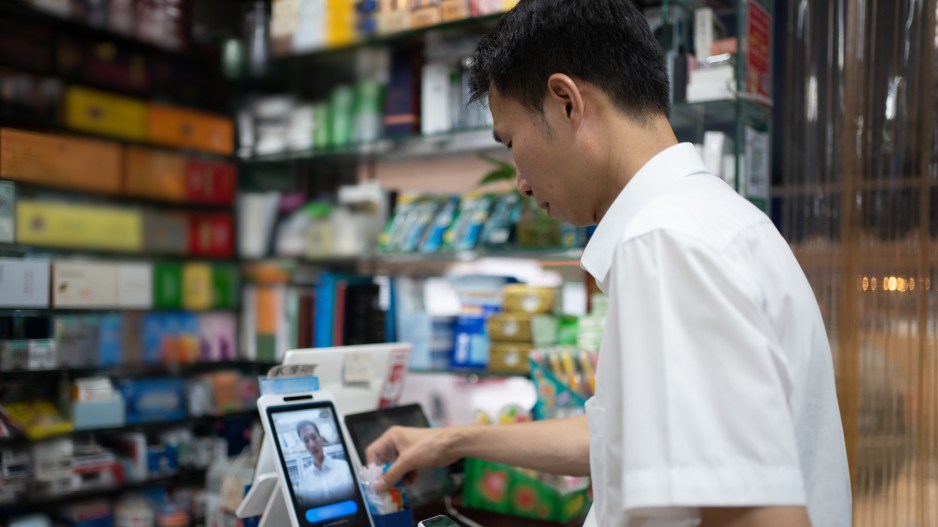In February 2019, when few people would have imagined that a pandemic would profoundly affect the way we purchase things, Research Co. and Glacier Media asked Canadians about their habits.
At the time, practically half of us (49 per cent) were ready for the moment in which fingerprints, palm recognition or iris scans would be used at stores or restaurants.
One year later, as many Canadians became acquainted with “contactless home delivery,” the numbers did not move much, with 50 per cent of Canadians happily imagining a world where biometrics would replace cash and credit cards.
Plenty has happened since then. Amazon Go store locations in Seattle have allowed customers to pay for purchases with their palm. This year, Starbucks started using similar technology at a Washington state location.
As these systems began to take shape, Canadians appeared to become more skeptical about biometrics. In 2022, the proportion of residents who felt this would be a good option fell to 40 per cent. In our latest survey, conducted two months ago, there is an almost even split across the country: 44 per cent would be happy buying things this way (up four points) and 45 per cent would not (down four points).
The generational divide is strong, with a majority of Canadians aged 18 to 34 (54 per cent) saying they would welcome paying through fingerprints, palm recognition or iris scans, compared to 44 per cent of those aged 35 to 54, and 31 per cent of those aged 55 and over.
On a regional basis, Ontarians are more likely to look forward to biometrics purchases (49 per cent) than their counterparts in British Columbia (44 per cent), Alberta (43 per cent), Quebec (42 per cent), Saskatchewan and Manitoba (40 per cent) and Atlantic Canada (also 40 per cent).
In a separate question, more than half of Canadians (53 per cent, up three points) expect people to pay with their fingerprints, palms or irises in the next 10 years, while about one in four (23 per cent, down one point) foresee this happening in the next 25 years.
The way we are covering expenses each month has changed with technology, even if we need to wait longer for Canadian stores to begin experimenting with biometrics. When we asked Canadians about the way they paid for things over the course of the past month, fewer than one in five transactions (18 per cent) involved cash, while more were conducted through debit cards (40 per cent) or credit cards (28 per cent). Few services or items were purchased through a smartphone (seven per cent), an e-transfer (six per cent) or a cheque (two per cent).
As expected, there are some peculiarities. One in 10 payments made by Canadians aged 18 to 34 (10 per cent) involved a smartphone. The country’s youngest adults are also more likely to have paid with cash at some point in the past four weeks (20 per cent) than their older counterparts.
While reliance on debit cards is stable across the three age groups, Canadians aged 55 and over are particularly fond of their credit cards, which amount to half of their purchases in a month (50 per cent). The proportions are lower among those aged 35 to 54 (41 per cent) and aged 18 to 34 (31 per cent).
There is a difference between acquiring an expensive item with a debit card or credit card and getting a coffee or snack. As was the case in 2022, more than three in five Canadians (63 per cent) told us that they had to make a small purchase – of less than $10 – with a card because they did not have any paper money with them.
Even if Canadians aged 55 and over rely on plastic for most of their payments, they are the least likely to use this method for small purchases (46 per cent). Their counterparts aged 35 to 54 (65 per cent) and aged 18 to 34 (75 per cent) find themselves at a counter without legal tender more often.
Over the past four years, the proportion of all transactions that involved cash in Canada has dropped from 31 per cent to 18 per cent. The times are changing, in large part due to the overreliance of older residents on plastic. Still, young adults are already using their smartphones to pay for things – in many cases with their face. For this generation, heading to a store or restaurant without a wallet and being able to pay by looking into a scanner is not hard to fathom.
Mario Canseco is president of Research Co.
Results are based on an online study conducted from August 17-19 among 1,000 adults in Canada. The data has been statistically weighted according to Canadian census figures for age, gender and region. The margin of error is plus or minus 3.1 percentage points, 19 times out of 20.



